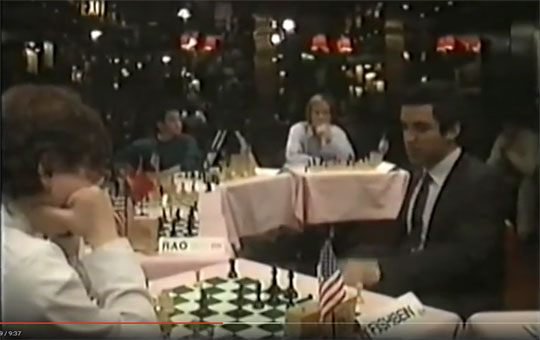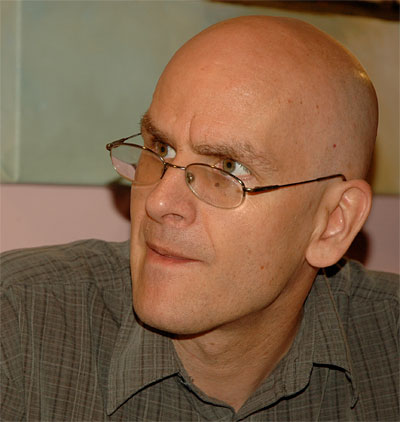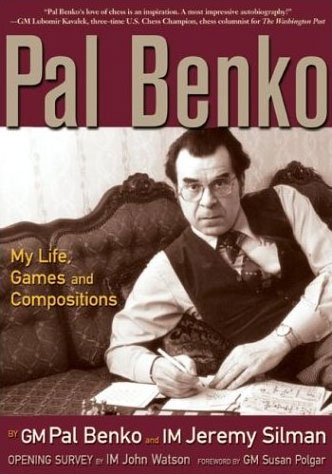


Many of our readers will remember the very first (and most famous) problem which started off this Christmas Puzzle tradition in 1999. It was a one-liner:
A game begins with 1.e4 and ends in the fifth move with knight takes rook mate
What our readers had to do is to play 1.e4 in the starting position, and then enter some legal chess moves so that the game ended on move five with the stipulated knight takes rook mate. Easy enough, don't you think? Well, definitely not, as you can read in our article the infamous 1999 ChessBase Christmas Puzzle. Some of the best chess minds in the world were thrown into turmoil by this problem.
The reason that such reconstruction problems are particularly useful and appropriate for our puzzle section is that solving them does not involve simply pressing Alt-F2 on your computer (to start a chess engine). You actually have to think and slog at it. And finding the solution gives you a very special kind of pleasure. Take for example my recent correspondence with an editorial colleague, IM Nisha Mohota, who had been writing our Express reports on the Qatar Masters, minutes after the rounds were over. In a recent email she wrote:
Frederic, yesterday, after I had finished my Qatar Express report and dinner, I followed the link in your email [to the 1999 Christmas puzzle]. I sat for one hour 45 minutes working on it and then told myself "sleep now, try later!" The next morning, I lay in bed thinking what could Garry have missed and what am I missing?! I got up and went about the chores of the day, but kept thinking about the problem. I analysed black trying to mate white and white trying to mate black, nothing worked! Then I told myself, okay, another ten minutes in front of the chess board and serious thinking. Guess what? Eureka, eureka, I found the solution!! I am so so super excited now!
After 1999 we published a few more similar construction problems, which were all immensely popular. But then we ran out of material. Fifteen years later, however, we found a way to revive the genre, thanks to an expedient reunion with an old friend.
In the late 1980s I was involved in doing a road show with Garry Kasparov, who was playing entire national teams in clock simuls. We started with the Swiss national team, the French (twice), the German juniors, the US juniors, before progressing to the full teams of Germany, Argentina and Israel.

I say "we" because I was helping Garry with preparation, by getting as many games as possible of his opponents and working with him in the fledgling version of ChessBase (running on an Atari ST!). It was the only way Garry could face these preposterously strong teams. Early on he told me that if he lost a simul it would be my fault. So I said that if he won I would take part of the credit.

In 1988 we were in New York to play the US Junior team – Patrick Wolff, Alex Fishbein, Stuart Rachels, Ilya Gurevich, Vivek Rao, and Danny Edelman. The result was 4-2 for Kasparov: Wolff scored the lone win, Fishbein and Edelman both drew. The clock simul took place in the famous Russian Tea Room and was described in this article. The videos imbedded in it are no longer available, but a full documentary, American Gambit, is available on YouTube. If you have half an hour you should definitely watch this three-part video – it is part of chess history.
You can watch part two and part three – ten minutes each – on Youtube
One of Kasparov's opponents, back in 1988, was Stuart Rachels. In the above video he is interviewed at length, like most of the other players. Stuart, who was born in New York in 1969 (but grew up in Alabama, where he now lives and teaches), became the youngest master in U.S. history at the age of eleven, won the U.S. Junior Championship at age 18, and was U.S. Co-Champion at age 20. At age 23, he retired with a national rating of 2605, still lacking a norm for the GM-title.

After getting degrees from Emory University, Oxford University, and Syracuse University, Stuart became a philosophy professor at the University of Alabama, receiving tenure in 2003. For several years, he was obsessed with bridge and labored over writing new editions of his late father’s book, The Elements of Moral Philosophy, which is the best-selling ethics textbook in the world. More details of Stuart's interestes and life achievements are available on his home page.

Stuart Rachels, 28 years after the memorable Kasparov simul
In 2011, Stuart returned to chess, hoping to be noticed as an author. Today, he has almost finished writing The Best I Saw in Chess, a book that covers almost all aspects of chess strategy. It includes Rachels’ classical games against Adams, Anand, Gelfand, Ivanchuk, Miles, Seirawan, and Spassky, as well as his clock-simul games against Kasparov played in 1983 and 1988.
When he was ten, Stuart invented a variant of helpmate problems which he calls “quick mates.” The task is to “construct the shortest possible game ending in x mate,” where x = any move in standard algebraic notation. He explains:
The shortest quick mate is where x = Qh5, and is solved by 1.g4 e5 2.f3 Qh4 mate. The mating move is "Qh4" instead of "Qh5" because if Black can do the mate faster than White, then Black will mate with the corresponding move. Normally, problems are “cooked” if they have multiple keys (i.e., more than one successful first move). The solutions to quick mate problems, however, are cooked only by shorter solutions. So 1.f3 e6 2.g4 Qh4 mate does not “cook” the solution given above, although in any case the Qh5-problem is dull.
Stuart did a few of these problems in the early 1980s but then abandoned them. A year ago, he picked them up again, this time working with friends on social media, especially GM Alex Fishbein and Alan Nelson of North Carolina. Together, they have found purported solutions to 840 problems -- which are all the quick mates that involve no clarification of file or rank (in other words, the list includes Rd1 mate and Nxe4 mate, but not Rad1 mate or N5xe4 mate). Francois Labelle has run a program confirming 733 of these solutions, but the other 107 problems took Stuart’s group at least seven full moves to solve, which is beyond comfortable range for an exhaustive computer search.
We tested a few of the (many) problems Stuart sent us. Here is a relatively easy one:
QM1: Give the shortest possible game that ends in rook takes e5 mate?
This problem is by Michael Koblentz and Stuart Rachels. I tested it on Nisha Mohota (see above) and got the correct solution in a quick response, which included the comment: "Such problems are my all time favourite because they are my strength." So I asked her, in Skype, to try to find the second solution (echo found by Alex Fishbein, different, same number of moves). Again the correct sequence came very quickly. So we offer you the above problem by Stuart Rachels, labelled QM1, as a practice puzzle. Solve it to be prepared for the next one, which is much harder:
QM2: A game ends with the move 7.Ka3 mate.
John Nunn posed this problem to a couple of people at the London Chess Classic earlier this month. GMs Jon Speelman and Gawain Jones, working together, took 25-30 minutes to find it. Geoff Moore, a Chemistry professor who is rated about 2150, solved it in about ten minutes on his own. "So maybe chess strength isn't that important," John concluded.
I couldn't resist: I gave the QM2 problem to Garry in Skype, with time stamp and everything, and challenged him to come up with a solution. No way he could look it up or solve anything with a chess engine. Less than five minutes later the solution appeared in my Skype window. So maybe chess strength does play a role, after all.
We leave you with these two problems to bring in the new year. Please do not post solutions in our feedback section below – we want all our readers to enjoy the pleasure of solving the problems themselves – or the equally pleasurable frustration of not being able to do so. You may only post your solving times, notarially certified if you please.
Here's the solution to the final version of Pal Benko's modification of the 1824 problem by Petrov:

[Event "?"] [Site "?"] [Date "2015.??.??"] [Round "?"] [White "Benko, Pal"] [Black "Mate in 15"] [Result "*"] [SetUp "1"] [FEN "3br3/2p3p1/6P1/n1P2Pp1/p1n1Bp2/8/1pPNNBP1/k5KR w - - 0 1"] [PlyCount "29"] [EventDate "2015.??.??"] [SourceDate "2015.12.21"] 1. Kh2+ Ka2 2. Nc3+ Ka3 3. Ndb1+ Kb4 4. Na2+ Kb5 5. Nbc3+ Ka6 6. Nb4+ Ka7 7. Nb5+ Kb8 8. Na6+ Kc8 9. Na7+ Kd7 10. Nb8+ Ke7 11. Nc8+ Kf8 12. Nd7+ Kg8 13. Bd5+ Re6 14. Bxe6+ Kh8 15. Kg1# *

Beautiful, right, how the two Cossack knights hunt down the black king
The final twin is created by removing the knight from the previous position.
Pal Benko, 2015

Mate in two moves
When you find the solution and play through it you will find
what Pal was aiming for: a Christmas tree in the final solution!
Pál Benkö, 87, is a Hungarian-American chess grandmaster, openings theoretician, author and problemist. He became Hungarian champion when he was 20 and finished in first place (or tied for first place) in eight US Championships, a record: 1961, 1964 (in that year he also won the Canadian Open Chess Championship), 1965, 1966, 1967, 1969, 1974, 1975. Benko's highest achievements were playing in the Candidates Tournament with eight of the world's top players in 1959 and 1962. He qualified for the 1970 Interzonal tournament, the leaders of which advance to the Candidates. However, he gave up his spot in the Interzonal to Bobby Fischer, who went on to win the World Championship in 1972.
In addition to his success as a player, Benko is a noted authority on the chess endgame and a composer of endgame studies and chess problems. He is an over-the-board GM and also a FIDE IM of chess composition. The only other person we know who has these two titles is Jan Timman of the Netherlands.
Pal Benkois also a dear friend who keeps in touch with us regularly, sending problems and puzzles for the ChessBase news page on special occasions.

This biography is a celebration of a great man's creative legacy, an amazing collection of 138 deeply annotated games which have been carefully prepared to be entertaining, enlightening, and instructive. They are brought to life by Benko's memoirs of his early years in war-torn Hungary, a world of poverty, chaos, pain, and ultimately, personal triumph. His insights into famous grandmasters transform legends into real people with substance and personality, and his reminiscences of famous tournaments take us on a journey through chess history unlike anything that's been published before. A massive survey of Benko's openings shows us the scope of his theoretical contributions to the game. Photos abound, and 300 of Benko's chess compositions allow lovers of the game to become intimately acquainted with a strikingly beautiful aspect of chess that most have overlooked.
This highly entertaining and instructive book gives competitors who wish to improve their playing strength a dynamic, fun way to deepen their knowledge and understanding.